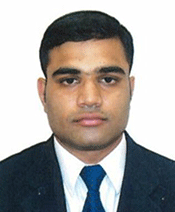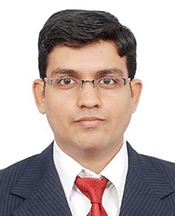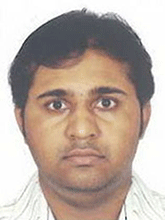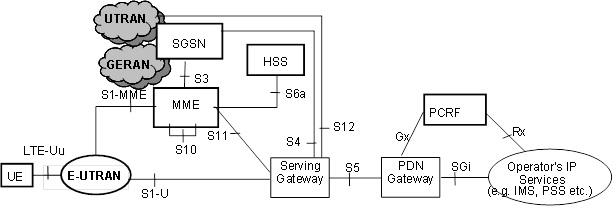- Cisco Community
- Technology and Support
- Wireless - Mobility
- Wireless
- Rahul, Arpit, Krishna?
- Subscribe to RSS Feed
- Mark Topic as New
- Mark Topic as Read
- Float this Topic for Current User
- Bookmark
- Subscribe
- Mute
- Printer Friendly Page
Ask the Expert: Demystifying Long-Term Evolution
- Mark as New
- Bookmark
- Subscribe
- Mute
- Subscribe to RSS Feed
- Permalink
- Report Inappropriate Content
02-28-2014 11:02 AM - edited 07-05-2021 12:18 AM
With Rahul Pal, Arpit Menaria and Krishna Kishore



Welcome to this Cisco Support Community Ask the Expert conversation. This is an opportunity to learn and ask questions about evolution of long-term evolution (LTE) and the future with experts Rahul Pal, Krishna Kishore, and Arpit Menaria.
LTE, commonly marketed as 4G LTE, is a standard for wireless communication of high-speed data for mobile phones and data terminals. It is based on the GSM/EDGE and UMTS/HSPA network technologies, increasing the capacity and speed using a different radio interface together with core network improvements. The standard is developed by the 3rd Generation Partnership Project (3GPP).
Rahul Pal is a customer support engineer based in Bangalore, India. He has seven years of experience in the field of GPRS/UMTS/LTE technologies specializing in R&D and customer support. Rahul has worked with multiple vendors such as Nortel, NSN, and now Cisco, gaining expertise in packet core products such as SGSN and MME. Rahul has also worked as an escalation engineer handling customer escalations (technical troubleshooting and handling customer management). Rahul also has international experience of working directly with telco customers in the United States, Europe, and APAC and holds an engineering degree in information technology.
Krishna Kishore is currently working as a customer support engineer based in Bangalore, India, focusing on ASR5000/ASR5500, SAMI, and HWIC products providing support to 3G/4G mobility solutions deployed across the world. He has more than eight years of experience in mobility technologies such as GPRS/UMTS/LTE/CDMA, with experience in development and customer support. Krishna has worked with multiple vendor platforms such as Nortel, Hitachi, NSN, and Cisco. He holds a bachelor's degree in electrical and electronics engineering and CCNA certification.
Arpit Menaria is a customer support engineer based in Bangalore, India. He has been with the Cisco TAC for the past two and a half years (since July 2013) and has worked in FTS and TAC roles. Throughout his seven and half years of industry experience, he's worked for Ericsson and Tata Communications getting exposed to the telecom and Internet service provider environment. His technical skills span mobility, routing, switching, Linux, and Solaris. He has CCIE certification in routing and switching (written), RHCE, and WWSP mobility expert (written). Arpit also holds an engineering degree in electronics from the Indian Institute of Technology, Banaras Hindi University of Varanasi.
Remember to use the rating system to let Rahul, Krishna and Arpit know if you have received an adequate response.
Our experts might not be able to answer each question due to the volume expected during this event. Remember that you can continue the conversation in Wireless - Mobility, sub-community Other Wireless - Mobility Subjects discussion forum shortly after the event. This event lasts through March 14, 2014. Visit this forum often to view responses to your questions and the questions of other community members.
- Labels:
-
Other Wireless Topics
- Mark as New
- Bookmark
- Subscribe
- Mute
- Subscribe to RSS Feed
- Permalink
- Report Inappropriate Content
03-03-2014 05:03 PM
Hello experts,
Please answer me something. What are the key differences in architecture in LTE when compared to GPRS/UMTS technologies and what are key factors contributing towards high data rates in LTE?
Thank you.
Henry
- Mark as New
- Bookmark
- Subscribe
- Mute
- Subscribe to RSS Feed
- Permalink
- Report Inappropriate Content
03-04-2014 01:50 AM
Thanks for your Question Henry.
To start with LTE had undergone significant architectural changes during its evolution compared to GPRS/UMTS architecture.
Following is an architectural overview of LTE in terms on new nodes and interfaces added:

Key Differences in the architecture when compared to GPRS/UMTS
Radio/Access NW:
- In case of GPRS/UMTS technologies, Radio side (GERAN) had the following nodes:
2G services: BSC & BTS
3G services: (UTRAN) consisted of RNCs & nodeB’s
- In case of LTE the radio (Evolved UTRAN) made of collection of eNodeBs in the network.
Packet Core NW:
- In case of LTE - MME, SGW, PGW & HSS were introduced which used to do functions of SGSN,GGSN & HLR in GPRS/UMTS technologies:
MME: Looks after Control plane (signaling) functionalities (control plan anchor) in LTE.
SGW: Looks after routing & forwarding of data packets in LTE.
PGW: User Plan IP anchor point. Provides connectivity for the UE to external packet data networks.
HSS: Acts as a centralized database that contains user related and subscription related info.
Regarding your Second Question on High Data Rates:
LTE technology has gone through several changes on the network which allows high data rate packet transfer.
The high data rates can be achieved because of the following factors:
- Low data transfer latencies (sub-5 ms latency for small IP packets in optimal conditions) and lower connection setup time than with previous radio access technologies (GPRS/UMTS).
- Simplification of radio architecture consisting of only eNodeB’s.
- Use of OFDMA,MIMO, SC-FDMA access technologies.
- Mark as New
- Bookmark
- Subscribe
- Mute
- Subscribe to RSS Feed
- Permalink
- Report Inappropriate Content
03-04-2014 10:49 AM
Hi Guys,
It would be great if the working of LTE nodes(MME,SGW etc.) may be described in little more details with their name acronyms demistified.
How the Location update happens in LTE, is ther any change from GPRS/UMTS?
What are the Location Update, attach, PDP activation and detach equivalent call flows in LTE?
What are the interfaces with data charging nodes? what data charging nodes come in direct interfacing with LTE nodes?
Thanks,
Akshay
- Mark as New
- Bookmark
- Subscribe
- Mute
- Subscribe to RSS Feed
- Permalink
- Report Inappropriate Content
03-05-2014 05:07 AM
Thanks for your question Akshay.
Below are the details about the LTE nodes -
MME is Mobility Management Entity and is in charge of all the Control plane functions related to subscriber and session management
- For subscriber management it talks to the HSS (same as HLR in 2G/3G).
- It performs security procedures which relate to end-user authentication as well as initiation and negotiation of ciphering and integrity protection algorithm
- It also performs signalling procedures used to set up Packet Data context and negotiate associated parameters like the Quality of Service
- Apart from these, the MME also performs the task of idle terminal location management, I.e. The tracking area update (similar to RAU in 2G/3G) process used in order for the network to be able to connect to the UE in case of incoming sessions
SGW is Serving Gateway node
The SGW is responsible for communicating with the MME and PGW for doing the signalling for establishing a data-plane tunnel with the eNodeB and the PGW over which the subscriber data is sent.
From a functional perspective, the Serving GW is the termination point of the packet data interface towards E-UTRAN. When terminals move across eNodeB in E-UTRAN, the Serving GW serves as a local mobility anchor.
PGW is Packet Data Network Gateway
Similar to the Serving GW, the PDN gateway is the termination point of the packet data interface towards the Packet Data Network.
As an anchor point for sessions towards the external Packet Data Networks, the PDN GW also supports Policy Enforcement features (which apply operator-defined rules for resource allocation and usage) as well as packet filtering (like deep packet inspection for virus signature detection) and evolved charging support (like per URL charging).
From a functional perspective, PGW can be assumed quite similar to the GGSN used in 2G/3G technologies.
The tracking area is the LTE counterpart of the location area and routing area. A tracking area is a set of cells. Tracking areas can be grouped into lists of tracking areas (TA lists), which can be configured on the User Equipment (UE). Tracking area updates are performed periodically or when the UE moves to a tracking area that is not included in its TA list.
Operators can allocate different TA lists to different UEs. This can avoid signaling peaks in some conditions: for instance, the UEs of passengers of a train may not perform tracking area updates simultaneously.
The detailed call flows can be seen in 23.401 LTE 3GPP Spec reference document under below sections -
5.3 – Authentication, security and location management procedures >>>> This will have all the attach, detach and location update call flows
5.4 – Session management procedures >>>> This will have all the default and dedicated bearer activation, QoS and interactions with PCRF etc.
5.5 – Handovers >>>> This will capture handover scenarios
Regarding your query on charging, please be informed the accounting functionality is provided by the Serving GW and the PDN GW which is similar to SGSN and GGSN in the older architectures.
The Serving GW shall be able to collect and report for each UE accounting information, i.e. the amount of data transmitted in uplink and downlink direction categorised with the QCI and ARP pair per UE per PDN connection.
Please let me know this answers your question.
Also, if you can be more specific in your query, probably I will be able to provide you the exact answer.
Thanks,
- Mark as New
- Bookmark
- Subscribe
- Mute
- Subscribe to RSS Feed
- Permalink
- Report Inappropriate Content
03-05-2014 03:55 PM
Thank you for the detailed responsive Rahul. I do have another question with regard to this topic. What are the common issues or challenges faced while deploying LTE solutions in telco operators?
Thanks again.
Henry
- Mark as New
- Bookmark
- Subscribe
- Mute
- Subscribe to RSS Feed
- Permalink
- Report Inappropriate Content
03-06-2014 12:59 AM
Challenges Faced by operators while deploying LTE Solutions
1.) No Global standards in LTE Spectrum Bands allocation and usage
Operators have to support range of spectrum bands to support. A lower spectrum band (e.g. 1800MHz) provides better indoor signal strength and travels further compared to one of a higher spectrum band (e.g. 2600MHz). However, the higher spectrum bands are better suited for covering densely-populated areas and managing heavy data volumes due to their larger bandwidth. lower frequency spectrums are more affordable to build and signals travel further, whereas higher frequency spectrums require a lot of base stations to cover a similar distance. This could very well be another possible reason why different Operators around the world use different spectrum bands, besides the obvious fact that they are also limited by the availability of these bands.
2.) Building a New or Converged Network and Backward compatibility with Legacy Networks:
Some Operators will build a completely new 4G network along the existing networks. Other Operators will create a converged network, where they try to make the different generations of technologies work together. In both cases, the process is highly complex and cost intensive. The transition to 4G network will require new radio access technology and core network expansion, while maintaining existing 2G/3G networks alongside the new 4G network will result in additional burden on Operators.
LTE is flat IP architecture so there is a need to create high capacity IP core network to connect MME(mobility management entity) ,S-GW,P-GW. All the interworking nodes including non- 3GPP systems is to be re-dimensioned. Backward compatibility is a very complex task during LTE deployment.
3.) Return on Investment (ROI) on 4G LTE
The migration to LTE or upgrading of existing mobile networks will incur high costs. Moreover, 4G LTE is expected to disrupt the traditional business models of Operators: voice calls and SMS. On LTE, we still don’t have Voice call Support and Proposed launch of VoLTE is still not widely deployed and in testing phases at many places.
With faster mobile data connectivity, consumers will be more inclined to use services and apps such as Skype and Whatsapp for communication. This change in consumer's usage behaviour will pose a challenge for Operators to profit from their investments in 4G networks.
4.) Operators have to devise new Data plans
To justify the investments in the new 4G networks, Operators have to change their data price models.
First, Operators will charge higher prices for their LTE offerings compared to their existing mobile data plans and maintain a higher quality of service to justify the higher Pricings.
Second,. They should implement "pay-for-what-you-use" pricing models, where consumers are charged based on their usage behaviors.
Third, Operators can adopt a value-based pricing model where consumers can pay a premium for a better experience, raising the possibility of introducing tiered service levels that guarantee certain connection speeds.
Biggest problem is customer cannot relate to all data plans and have to constantly monitor data usage to ensure that they receive high data speeds.
5.) Security Concerns from Untrusted Domains
While operators can theoretically benefit from reduced latency and greater ease of management within the LTE architecture, there is a very real possibility that overall LTE performance will degrade due to the high volume of transactions required to ensure that high levels of service quality are maintained and proper policy control decisions are implemented. Operators face significant challenges in the area of network security as traffic in emerging architectures is increasingly likely to flow within spheres of "trusted" and "untrusted" networks. framework allows operators to handle security gateway functionality.
Within the LTE network elements, including the ability to implement IPsec — the IP network security standard. Operators facing this new, unfamiliar environment face a key choice: whether to rely on the functionality provided within the standards-defined LTE network elements to address security and other requirements or whether to adopt standalone solutions. Cash-Strapped Operators might Opt for LTE solutions as they need not invest separately in Security Devices and functions.
6.) True 4G Global Roaming is not possible unlike 3G
Due to the lack of harmonization of LTE spectrum bands across different countries, it is almost impossible within the near future to support LTE global roaming.
To use a LTE device for data roaming, based on the current worldwide spectrum usage, the device needs to support at least 15 bands. Supporting so many band on LTE handset is not possible. So 3G data roaming for international traveler is here to stay for very long time still we standardize LTE Spectrum Bands Globally
- Mark as New
- Bookmark
- Subscribe
- Mute
- Subscribe to RSS Feed
- Permalink
- Report Inappropriate Content
03-06-2014 02:35 AM
Greetings gents!
First, allow me to thank you for giving us this opportunity to discuss Long Term Evolution!
I'm trying to find a good answer about X2 interface. I've heard some answers but didn't understand it. What benefit it brings into EPC, when is it activated, why it was created, what problem does it solve?
Cheers,
Tenaro
- Mark as New
- Bookmark
- Subscribe
- Mute
- Subscribe to RSS Feed
- Permalink
- Report Inappropriate Content
03-10-2014 09:46 PM
Hi Tenaro,
Thanks for putting up this question.
X2 interface is basically a logical interfaces which connects eNodeB’s together in the E-UTRAN.
When you compare with 3G architecture, where we had eNodeB’s with RNC in the UTRAN architecture, here in 4G we only have eNodeB’s In the E-UTRAN architecture. The radio architecture has been simplified here.
In 3G architecture, the eNodeB’s could not directly communicate directly and had to go through the RNCs to communicate with each other whereas in LTE, the eNodeB’s could communicate with each other through X2 interface thus simplifying the architecture. We have X2 based handovers to facilitate the same.
You can refer to ETSI TS 136 420, for functions listed of the X2 interface
Rahul
- Mark as New
- Bookmark
- Subscribe
- Mute
- Subscribe to RSS Feed
- Permalink
- Report Inappropriate Content
03-06-2014 09:51 PM
Hi Arpit,
information in answer and document references are quite helpful. few more new questions here.
location management function is overlapping in MME and SGW, could you explain how MME and SGW work for this?
will SGW remain continuously in path for all data transfer between UE and internet?
about charging which node will interface with OCS and on what interface?
there is interface between SGSN and SGW what is the purpose?
what are the basic configuration settings that user has put to connect to LTE network?
e.g. as we just put APN (and optional username/password) for 2G/3G packet data access.
Thanks,
Akshay
- Mark as New
- Bookmark
- Subscribe
- Mute
- Subscribe to RSS Feed
- Permalink
- Report Inappropriate Content
03-06-2014 03:29 AM
Hi,
I think I have basic understanding of MME, SGW and PGW elements, plus SGSN and GGSN; they all run on same hardware (ASR5x00) and use same operating system (Star-OS). I can also easily explain purpose of HSS/HLR but problems already start with PCRF and OCS. What is the advantage of having separate elements/interfaces and not integrate those functions into HSS?
Just by checking basic ASR5x00 Doc Set, I can easily find many other elements that are totally unknown to me; I'm talking here about abbreviations such as HeNB-GW, eWAG, IPSG, MVG or SCM. Any chance you can provide us with some high level overview of all these elements/functions? Is there maybe some picture/scheme/topology_diagram that displays all elements together?
I'll be greatful if you can write few sentences about it.
Thanks,
Bob
- Mark as New
- Bookmark
- Subscribe
- Mute
- Subscribe to RSS Feed
- Permalink
- Report Inappropriate Content
03-12-2014 01:46 AM
Rahul, Arpit, Krishna? Anybody?
I'll be happy even with the partial answers, if you don't like all abbreviations I mentioned, just pick up your favourite one and give us some comment you think is useful. For example, what is the purpose of HeNB-GW element, can you give us real life example that led to creation of HeNB-GW? Same goes for eWAG, I know it has something to do with WiFi and how to offload 3G/4G network but I don't know what function it performs that can't be done on MME/SGW/PGW?
Discover and save your favorite ideas. Come back to expert answers, step-by-step guides, recent topics, and more.
New here? Get started with these tips. How to use Community New member guide
